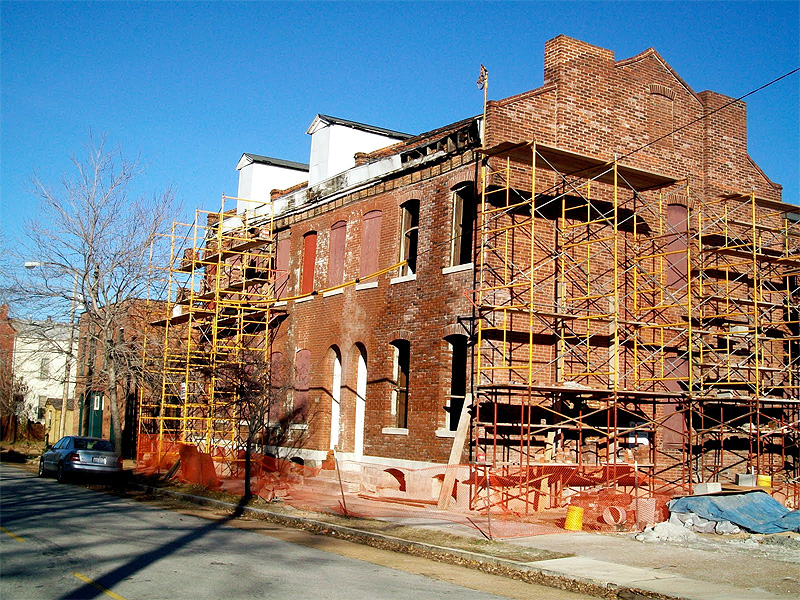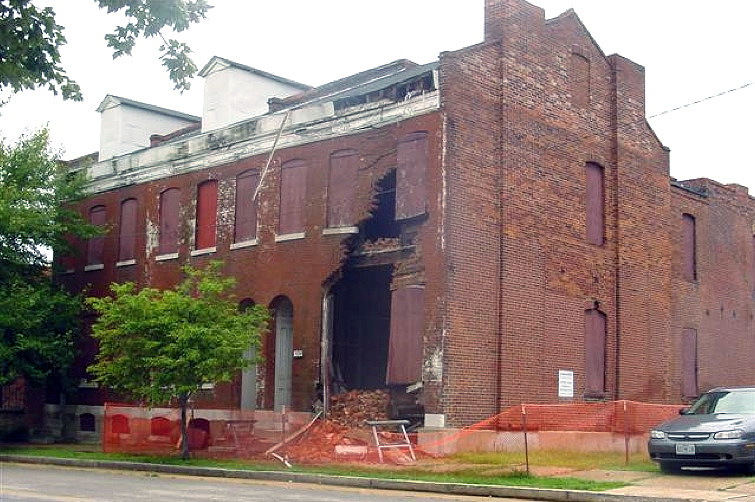When in architecture school in St. Louis, I remember professors often saying that a building is salvageable until it’s town down. It just depends on the priorities of the community and the willingness to take on a challenge.
Take the above partially collapsed row house in St. Louis as an example. If this building were in Louisville, it would likely have been torn down soon after it suffered the collapse, but in St. Louis, demolition requests were denied and the structure was renovated as seen in the photo below.

While this example is in the up-and-coming Lafayette Square neighborhood of St. Louis, there are also examples of similar renovations in in less well off neighborhoods with similar result. Based on these examples, it seems like demolitions like these shouldn’t have ever happened.
Here’s another interesting story of a near preservation success in New York’s cast-iron district of SoHo from the Architect’s Newspaper:
In 2004, excavation work was underway at neighboring 72 Grand Street, on the corner of Wooster Street. According to neighbors, the work was far from adequate, especially given the area’s silty soil. Then it rained for almost two weeks. The foundation at 74 Grand buckled. The five-story loft building slid a full 13.5 inches out of alignment, leading to emergency shoring and evacuation.”
The building stood with emergency shoring for years and as the building’s foundation continued to shift five years later, the city eventually decided the building had to be town down. The demolition clearly wasn’t an easy decision.
The point of these two examples is to show that preservation can happen even in seemingly impossible situations. Louisville simply needs to take a stand and declare that it values its history and its current stock of historic buildings.
There are two big preservation battles going on in Louisville right now, the effort to save the Iron Quarter buildings and a similar effort to save an 1830s era house in Mockingbird Valley. Perhaps we can make a stand as a community and keep these historic buildings standing.


